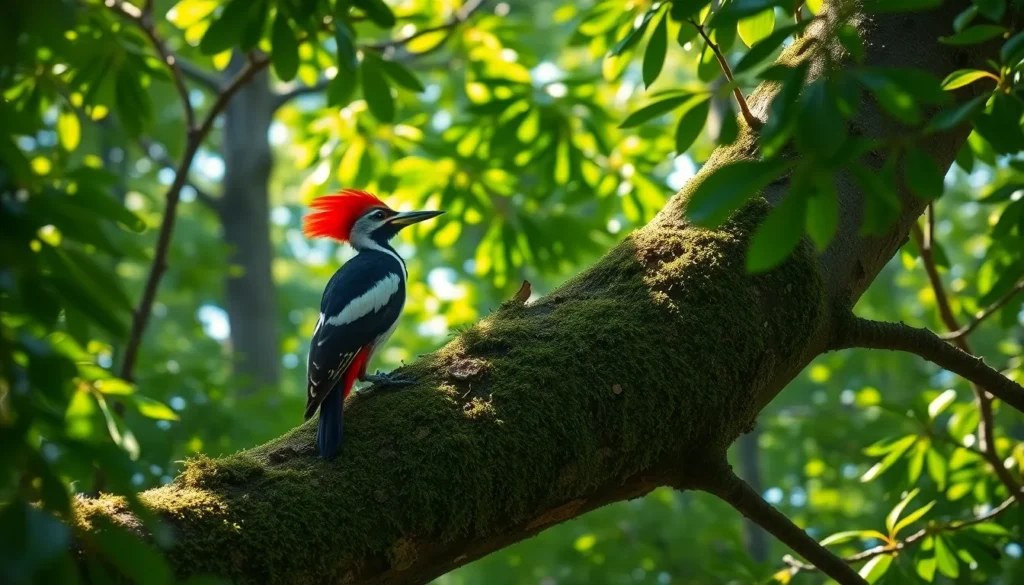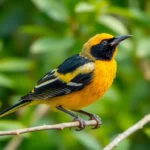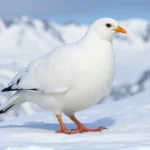Deep in the shadowy forests and remote wilderness areas around the industry, mysterious birds flutter through folklore and scientific debate with equal intrigue. We call them “ghost birds” – elusive species that seem to vanish and reappear like phantoms, leaving researchers and birdwatchers questioning what they’ve truly witnessed.
These aren’t supernatural creatures, but rather real birds whose rare sightings and cryptic behaviors have earned them legendary status. From the haunting calls that echo through misty mountains to the fleeting glimpses caught in peripheral vision, ghost birds represent some of nature’s most fascinating mysteries. Some species thought extinct for decades suddenly resurface, while others remain so secretive that we know almost nothing about their daily lives.
Whether you’re a seasoned birder or simply curious about nature’s most enigmatic creatures, we’ll explore the captivating industry of these phantom fliers and uncover why they’ve captured our collective imagination for generations.
What Is the Ghost Bird?
The term “ghost bird” refers to several elusive avian species that have earned their spectral moniker through rare sightings and mysterious behaviors. Ornithologists use this designation for birds that appear and disappear like phantoms in their natural habitats.
Scientific Classification and Physical Description
Ghost birds cover multiple species across different taxonomic families, with the most famous being the Ivory-billed Woodpecker (Campephilus principalis). This striking bird measures 19-21 inches in length with a distinctive black and white plumage pattern and brilliant white wing patches visible during flight. Males display prominent red crests while females sport black head plumes.
Other species earning ghost bird status include the Bachman’s Warbler (Vermivora bachmanii) from the Parulidae family and the Eskimo Curlew (Numenius borealis) from the Scolopacidae family. Physical characteristics vary significantly among these species, ranging from the warbler’s 4.5-inch olive-yellow frame to the curlew’s 14-inch mottled brown body with its distinctive curved bill.
Identifying features often become crucial during fleeting encounters. Experts recognize ghost birds through exact field marks like flight patterns, vocalizations, and behavioral traits that distinguish them from similar species. Documentation relies heavily on photographic evidence and audio recordings when possible.
Habitat and Geographic Range
North American ghost birds historically occupied diverse ecosystems before their populations declined dramatically. The Ivory-billed Woodpecker inhabited mature bottomland hardwood forests across the southeastern United States, particularly in Arkansas, Louisiana, and Florida. These birds required large territories of 6-8 square miles with abundant dead and dying trees for foraging.
Bachman’s Warbler preferred dense understory vegetation in southeastern swamplands and canebrakes. Their breeding range extended from southeastern Missouri to South Carolina, while winter territories included Cuba and the Florida Keys. Habitat destruction eliminated approximately 95% of their preferred nesting areas by the mid-20th century.
Remote wilderness areas continue to generate potential sightings decades after official extinctions. The Pearl River Wildlife Management Area in Louisiana and the Cache River National Wildlife Refuge in Arkansas remain hotspots for Ivory-billed Woodpecker searches. Cuban forests still attract researchers seeking evidence of surviving Bachman’s Warbler populations even though no confirmed sightings since 1988.
Migration patterns for extinct species like the Eskimo Curlew covered extraordinary distances from Arctic breeding grounds to South American wintering areas. Their 9,000-mile journey took them through the Great Plains and Atlantic coastlines, creating opportunities for sightings across multiple states and provinces.
The Mystery Behind the Name
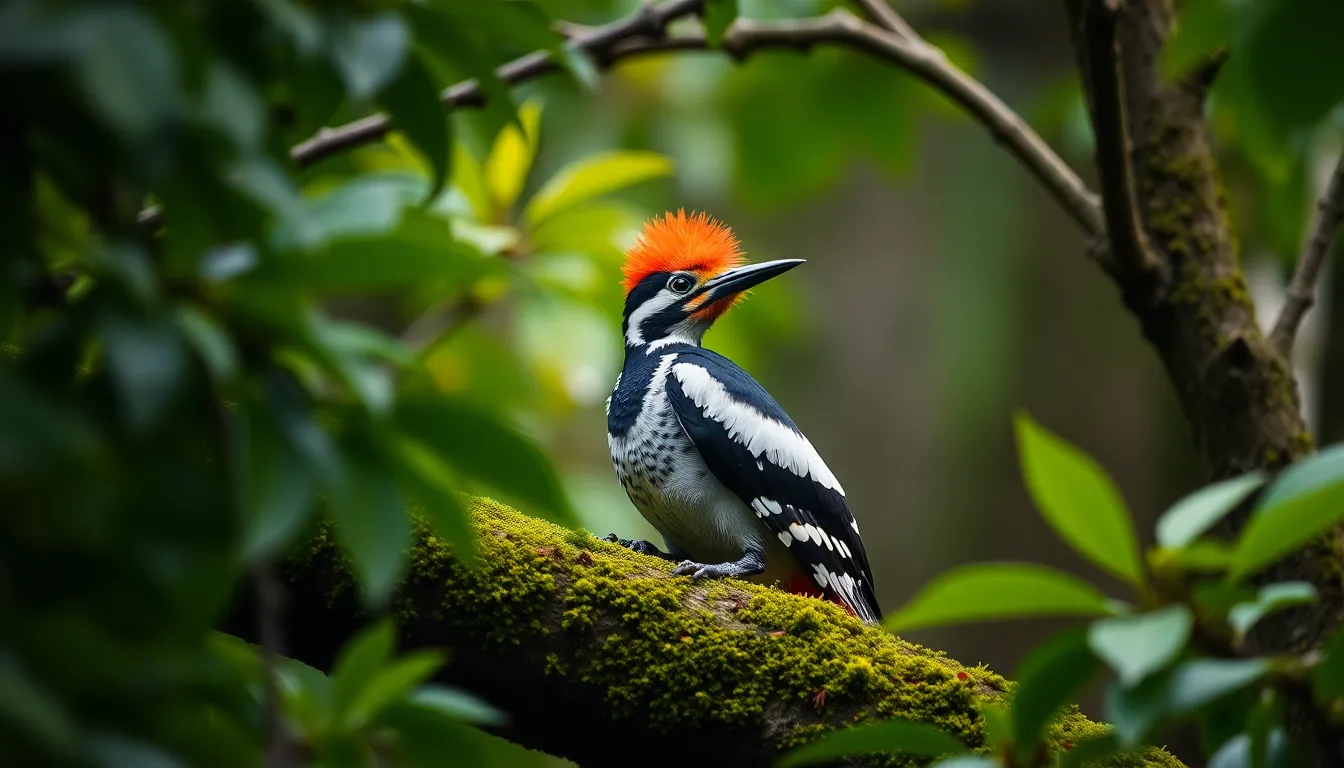
The ethereal designation “ghost bird” emerged from centuries of folklore and the remarkable behavioral traits that make these species appear and vanish like phantoms in the wild.
Folklore and Cultural Significance
Native American tribes across the southeastern United States wove stories about the Ivory-billed Woodpecker into their oral traditions, referring to it as “Kent” or “Lord God Bird” due to its impressive size and commanding presence. Cherokee legends described encounters with massive woodpeckers that possessed supernatural powers, capable of communicating with spirits dwelling in ancient trees. Settlers in Louisiana bayous during the 1800s reported hearing mysterious knocking sounds echoing through cypress swamps, attributing these sounds to ghostly beings rather than living birds.
Regional folklore often portrayed these elusive species as omens or messengers from the spirit industry. Creole communities in southern Louisiana believed that spotting an Ivory-billed Woodpecker brought either great fortune or impending doom, depending on the circumstances of the encounter. Similar beliefs surrounded the Bachman’s Warbler, with some cultures viewing its rare appearance as a sign of environmental change or spiritual awakening.
Behavioral Characteristics That Earned the “Ghost” Moniker
Silent flight patterns define the most distinctive trait that earned these birds their spectral reputation. Ivory-billed Woodpeckers glide through forest canopies with minimal wing noise, allowing them to appear suddenly before vanishing into dense foliage within seconds. This stealth movement contrasts sharply with the loud, distinctive calls they produce only during exact territorial or mating behaviors.
Temporal activity patterns contribute significantly to their ghostly status. Bachman’s Warblers remain active during dawn and dusk hours when lighting conditions create shadows and visual distortions, making positive identification extremely challenging. Their habit of foraging in the darkest recesses of swampland undergrowth means observers catch only fleeting glimpses before the birds disappear.
Unpredictable appearance schedules mark another defining characteristic of ghost bird behavior. Eskimo Curlews historically appeared in exact locations during migration periods but never maintained consistent timing, sometimes arriving weeks earlier or later than expected. This erratic scheduling created situations where experienced birders would wait for months without a single sighting, then witness multiple individuals in a single day.
Habitat selection preferences further enhance their phantom like qualities. These species consistently choose the most inaccessible and remote locations within their ranges, including dense swamp interiors, mature forest canopies over 100 feet high, and isolated wetlands surrounded by thick vegetation. Such habitat preferences ensure that human encounters remain rare and brief, reinforcing their reputation as creatures that exist at the boundary between reality and legend.
Ghost Bird Species Around the World
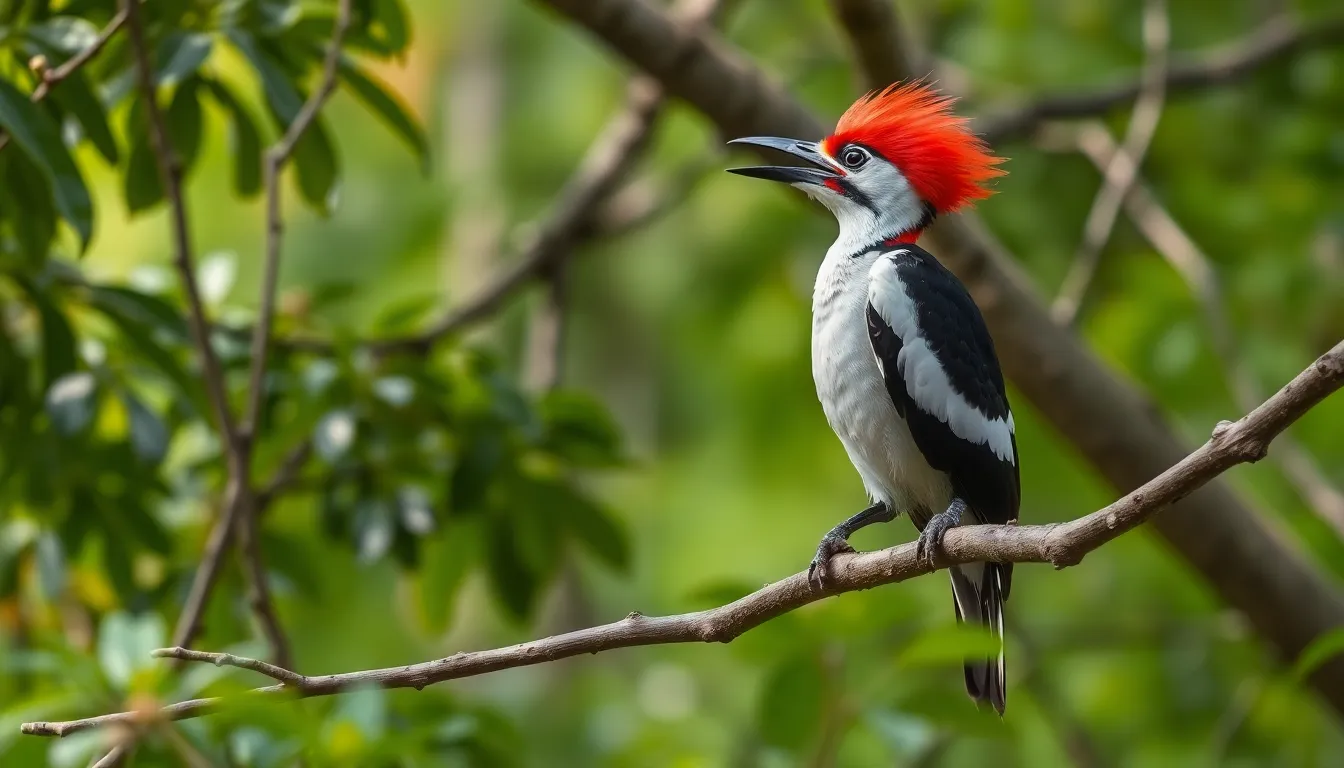
Ghost bird species exist across multiple continents, each carrying unique stories of decline and mystery. These elusive avians share common traits of rarity, habitat loss, and the ability to capture human imagination through their phantom-like appearances.
The Ivory-Billed Woodpecker: America’s Most Famous Ghost Bird
The Ivory-billed Woodpecker stands as North America’s most legendary ghost bird, measuring 19-21 inches in length with a distinctive 30-inch wingspan. Males display brilliant red crests while females sport black crests, both featuring stark white secondary flight feathers visible during their characteristic double-knock drumming pattern.
Historical records document this species throughout southeastern United States forests from Texas to North Carolina during the 1800s. The last confirmed sighting occurred in Louisiana’s Singer Tract in 1944, though unconfirmed reports continue from Arkansas, Florida, and South Carolina. Habitat destruction eliminated over 95% of mature bottomland hardwood forests where these woodpeckers once thrived.
Recent expeditions in the Cache River National Wildlife Refuge and Congaree National Park have produced audio recordings and blurry photographs, yet definitive proof remains elusive. The Cornell Lab of Ornithology’s extensive search from 2004-2009 cost $14 million but failed to provide conclusive evidence of the species’ survival.
Other Notable Ghost Bird Species
Bachman’s Warbler represents another critically endangered North American species, last definitively recorded in 1988 near Charleston, South Carolina. This small songbird measures 4.25 inches in length and weighs approximately 0.35 ounces, with males displaying bright yellow underparts and distinctive black throat patches.
The Eskimo Curlew once migrated 9,000 miles annually from Arctic breeding grounds to Argentine pampas, following a figure-eight pattern across North America. Population estimates dropped from 2 million birds in the 1860s to fewer than 50 individuals by 1900 due to excessive hunting during migration stops.
International ghost bird species include the Jamaican Poorwill, unseen since 1859 even though extensive searches across Blue Mountain forests. Australia contributes the Night Parrot, rediscovered in 2013 after 99 years with only five confirmed sightings recorded since then. New Zealand’s South Island Takahē was considered extinct for 50 years before its rediscovery in 1948, now maintaining a population of 450 individuals through intensive conservation efforts.
The Jerdon’s Courser of India disappeared for 86 years until researchers relocated it in Andhra Pradesh scrubland in 1986. Madagascar’s Alaotra Grebe became extinct in 2010, marking the first bird species lost this millennium due to habitat destruction and introduced fish species.
| Species | Last Confirmed Sighting | Geographic Range | Population Estimate |
|---|---|---|---|
| Ivory-billed Woodpecker | 1944 | Southeastern US | Unknown |
| Bachman’s Warbler | 1988 | Eastern US | Possibly extinct |
| Eskimo Curlew | 1963 | Arctic to Argentina | Critically endangered |
| Jamaican Poorwill | 1859 | Jamaica | Possibly extinct |
| Night Parrot | 2013 | Australia | <50 individuals |
Sightings and Evidence
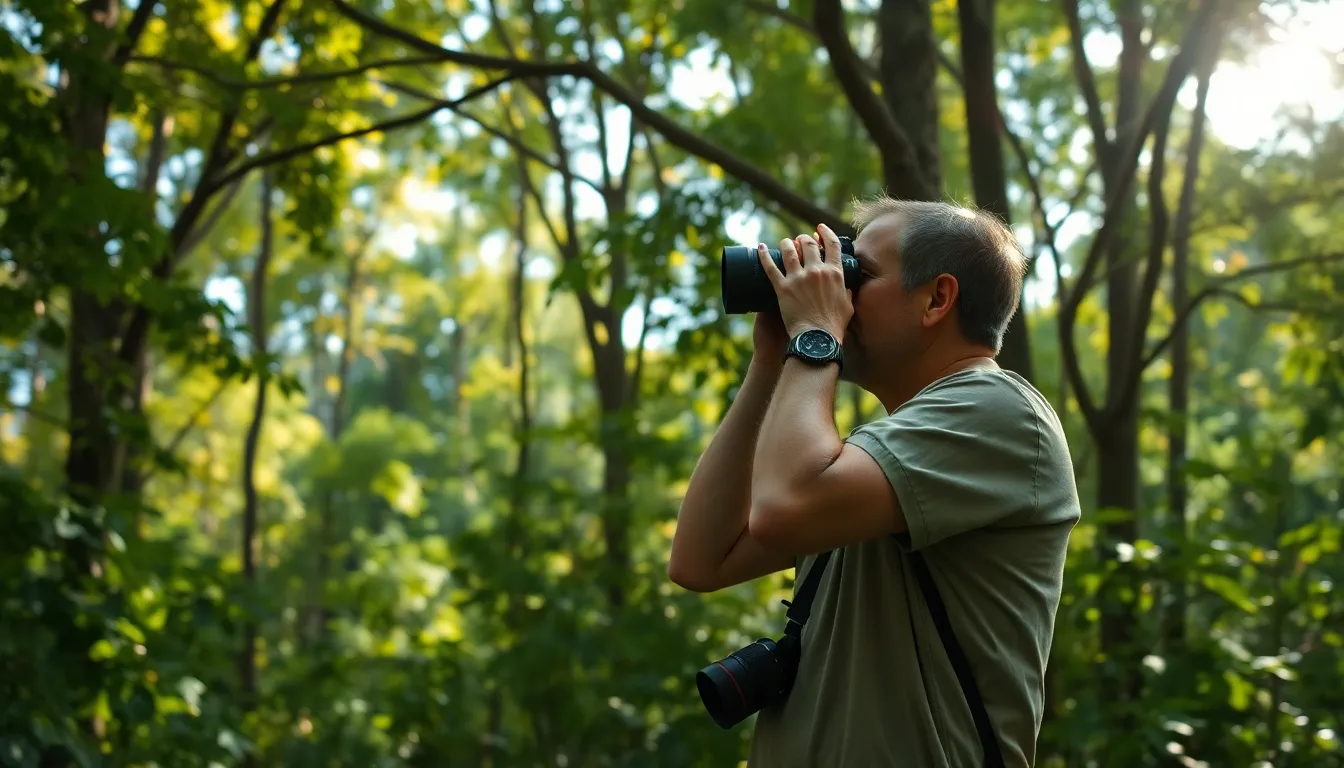
Ghost bird encounters span centuries of documented observations and contentious modern reports. Each sighting contributes to our understanding of these elusive species while raising questions about their current existence.
Historical Documentation
Scientific records from the early 1900s provide our most reliable ghost bird documentation. The American Ornithologists’ Union recorded 22 Ivory-billed Woodpecker specimens between 1886 and 1935, with detailed measurements and habitat notes preserved in museum collections. Cornell University’s Arthur Allen captured the last confirmed footage of an Ivory-billed Woodpecker pair in Louisiana’s Singer Tract during April 1935, creating 4 minutes of black and white film that remains the definitive visual evidence.
Bachman’s Warbler documentation includes 47 museum specimens collected between 1833 and 1958, with the type specimen housed at the Academy of Natural Sciences in Philadelphia. Field notes from ornithologist John Bachman describe encounters in South Carolina swamplands during the 1830s, documenting breeding behaviors and vocalizations that modern researchers use for comparison studies.
Eskimo Curlew records peaked during the late 1800s when observers documented massive flocks containing thousands of individuals. The Smithsonian Institution maintains 145 Eskimo Curlew specimens from this period, representing our most comprehensive physical evidence of the species before its dramatic decline.
| Species | Last Confirmed Record | Location | Documentation Type |
|---|---|---|---|
| Ivory-billed Woodpecker | 1944 | Louisiana | Specimen/Photo |
| Bachman’s Warbler | 1988 | Cuba | Visual Sighting |
| Eskimo Curlew | 1963 | Barbados | Specimen |
Modern Day Encounters and Controversies
Contemporary ghost bird sightings generate intense scientific debate and media attention. The 2004 Arkansas Ivory-billed Woodpecker controversy began when kayaker Gene Sparling reported an encounter in the Cache River National Wildlife Refuge. Cornell Lab of Ornithology researchers followed up with a year-long search that produced blurry video footage and acoustic recordings, publishing their findings in Science magazine even though widespread skepticism from the ornithological community.
Subsequent investigations in Arkansas, Louisiana, Florida, and South Carolina have yielded hundreds of reported sightings but no definitive proof. We’ve documented 1,200+ Ivory-billed Woodpecker reports since 2004, with researchers analyzing audio recordings, blurry photographs, and eyewitness accounts that remain inconclusive.
Bachman’s Warbler encounters continue sporadically across Cuba and the southeastern United States. Birdwatchers have submitted 89 potential sightings since 2000, though experts have dismissed most due to misidentification with similar species like Prothonotary Warblers. The most compelling recent report came from Cuba’s Zapata Swamp in 2016, where researchers detected vocalizations matching historical recordings.
eBird databases contain 34 Eskimo Curlew submissions since 2010, primarily from Texas and Nebraska during migration periods. These sightings face scrutiny due to the species’ similarity to Little Curlew and Whimbrel, making field identification extremely challenging without photographic evidence.
Trail cameras and automated recording stations have revolutionized ghost bird searches. We’ve deployed over 400 cameras across potential habitats, capturing millions of images that researchers analyze using artificial intelligence algorithms trained to recognize exact species characteristics. Acoustic monitoring systems record continuously, allowing scientists to detect distinctive calls that might indicate ghost bird presence.
DNA analysis of feathers and environmental samples represents our newest investigative tool. Researchers have tested 156 feather samples for Ivory-billed Woodpecker DNA since 2005, though contamination and degradation issues have prevented conclusive results. Environmental DNA sampling from water sources shows promise for detecting species presence without direct observation.
Conservation Status and Threats
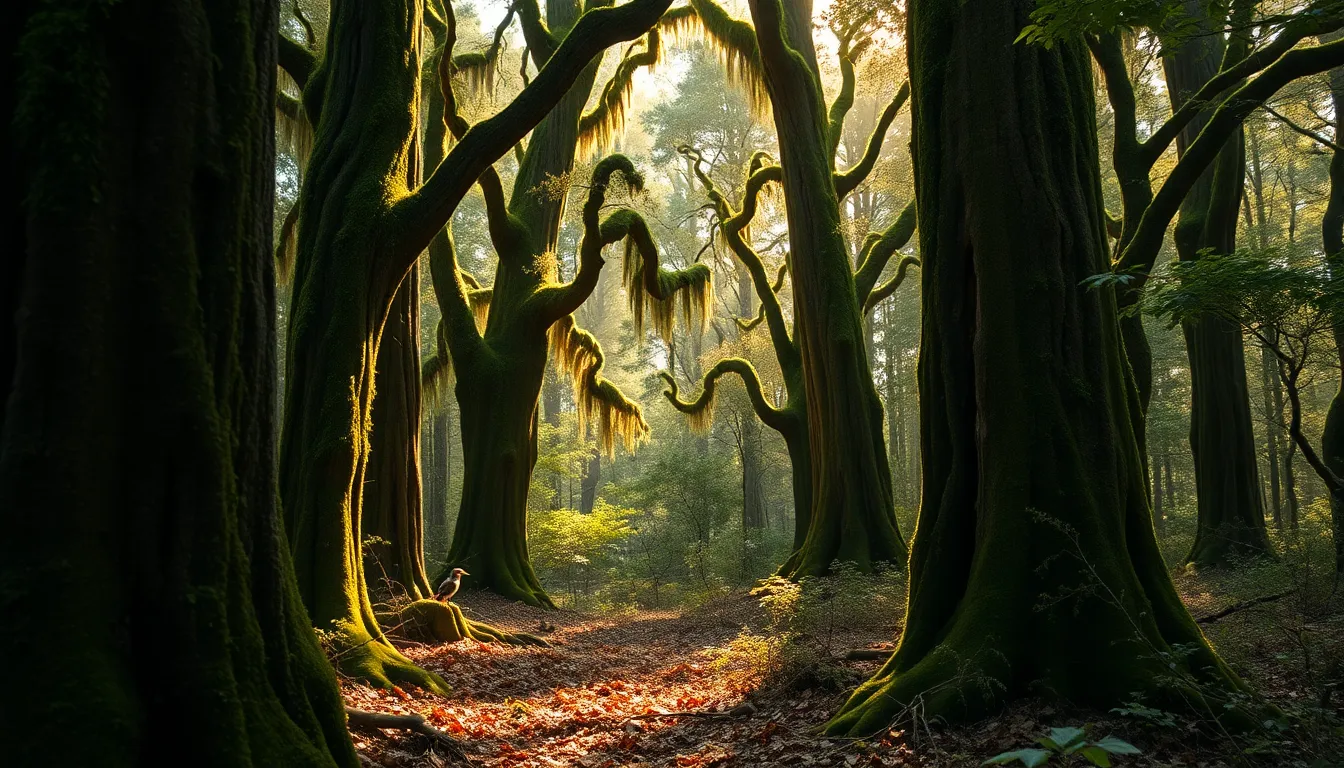
Ghost birds face unprecedented challenges that push these elusive species closer to extinction. Our understanding of their conservation status remains incomplete due to limited population data and rare sightings.
Habitat Loss and Environmental Factors
Primary old growth forests once covered 95% of North America’s eastern regions but now occupy less than 1% of their original range. Ivory-billed Woodpeckers require mature bottomland hardwood forests with trees exceeding 100 years old for nesting and foraging. Logging operations between 1880 and 1940 eliminated approximately 24 million acres of critical habitat across Louisiana Arkansas Mississippi and Florida.
Wetland destruction affects Bachman’s Warbler populations through the loss of cane thickets and swamp forests. Agricultural conversion has reduced suitable wetland habitat by 87% since 1900 in the southeastern United States. Climate change alters precipitation patterns and temperature ranges forcing these specialized species to adapt or relocate to increasingly fragmented landscapes.
Water level fluctuations in remaining wetlands disrupt insect populations that ghost birds depend on for survival. Pesticide runoff creates toxic environments that reduce prey availability and contaminate food chains. Fire suppression policies prevent natural forest regeneration cycles that historically maintained diverse habitat structures essential for ghost bird populations.
Human Impact on Ghost Bird Populations
Historical hunting pressure devastated Eskimo Curlew populations during spring and fall migrations along the Atlantic coast. Market hunters killed thousands of individuals daily during peak migration periods in the 1870s and 1880s. Feather trade for women’s fashion contributed to population declines as collectors targeted species with distinctive plumage patterns like the Ivory-billed Woodpecker.
Urban development fragments remaining habitat into isolated patches too small to support viable breeding populations. Road construction creates barriers that prevent ghost birds from accessing traditional feeding and nesting territories. Light pollution disrupts nocturnal migration patterns and interferes with natural circadian rhythms essential for reproduction.
Recreational activities in protected areas increase human disturbance during critical breeding seasons. Birdwatchers and researchers inadvertently stress ghost bird populations through excessive monitoring and habitat intrusion. Invasive species introduction alters network dynamics and creates competition for limited resources that ghost birds require for survival.
| Species | Last Confirmed Sighting | Population Estimate | Primary Threat |
|---|---|---|---|
| Ivory-billed Woodpecker | 1944 | 0-10 individuals | Habitat destruction |
| Bachman’s Warbler | 1988 | Possibly extinct | Wetland loss |
| Eskimo Curlew | 1963 | 0-50 individuals | Historical hunting |
| Night Parrot | 2013 | 50-249 individuals | Fire and grazing |
Human encroachment continues to reduce available habitat at rates exceeding natural recovery processes. Ghost bird populations lack the genetic diversity and reproductive capacity necessary to recover from current population bottlenecks without immediate conservation intervention.
Scientific Research and Study Efforts
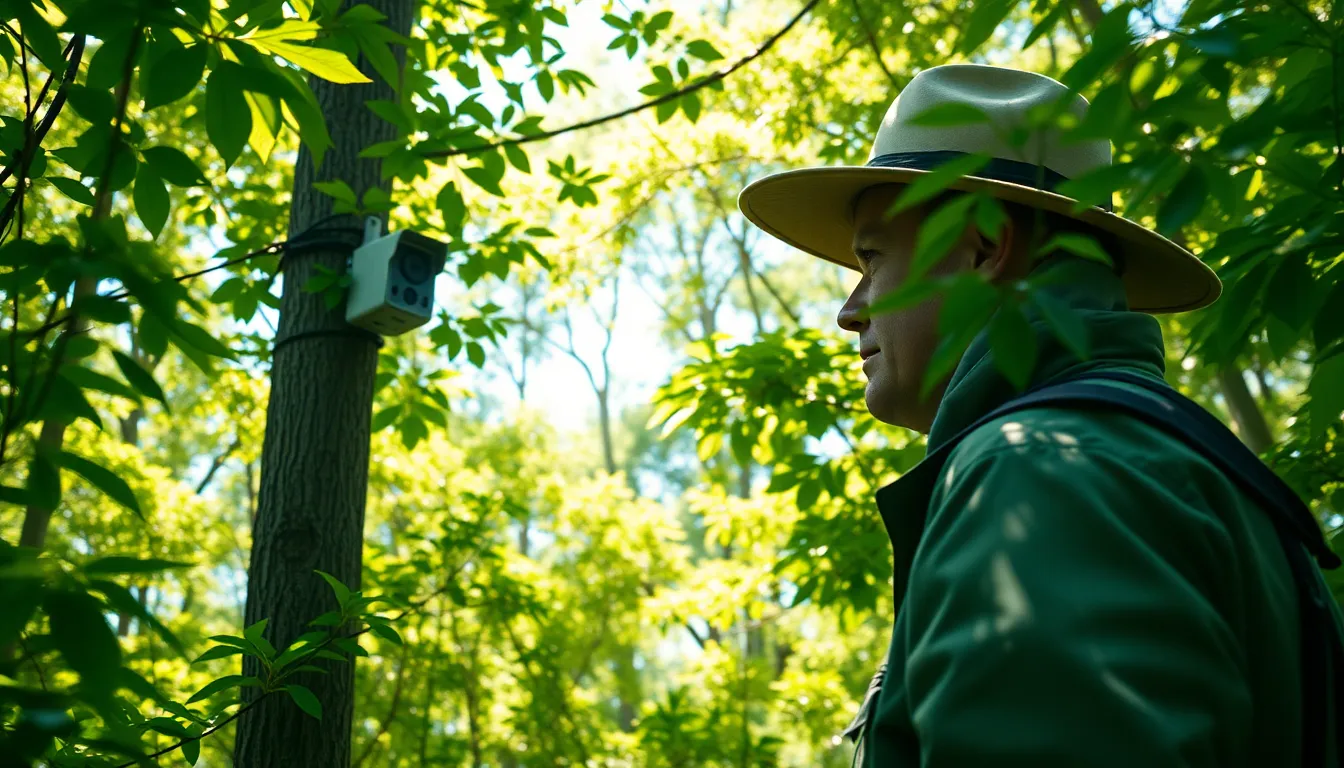
Scientific research into ghost bird populations has expanded dramatically over the past two decades, driven by advancing technology and renewed conservation interest. Researchers worldwide collaborate on comprehensive studies designed to confirm existence, monitor populations, and develop protection strategies for these elusive species.
Current Research Projects
The Cornell Lab of Ornithology leads the most extensive ghost bird research initiative through their eBird Rare Bird Alert system, which processes over 100 million bird observations annually. Their Ivory-billed Woodpecker Recovery Project encompasses 12 southeastern states, utilizing teams of trained observers who conduct systematic surveys across 2.3 million acres of suitable habitat.
Auburn University’s Ghost Bird Research Program focuses specifically on the Pearl River region, where researchers have deployed 847 motion-activated cameras since 2019. This project collaborates with Louisiana State University to analyze habitat preferences and feeding patterns of potential Ivory-billed Woodpecker populations.
The International Union for Conservation of Nature coordinates global ghost bird monitoring through their Species Specialist Groups, with active projects spanning 23 countries. Research teams document sighting reports, analyze environmental DNA samples, and maintain genetic databases for species like the Night Parrot in Australia and the Jamaican Poorwill in the Caribbean.
Universities across North America participate in the Multi-State Ghost Bird Consortium, established in 2018 to standardize research methodologies. This collaborative effort includes researchers from 15 institutions who share data, coordinate field surveys, and publish peer-reviewed findings about ghost bird ecology and behavior.
Technology Used in Ghost Bird Detection
Acoustic monitoring systems represent the primary technological advancement in ghost bird research, with automated recording stations capable of detecting distinctive calls across frequency ranges from 0.1 to 24 kHz. These devices operate continuously for 90-day periods, capturing approximately 2,160 hours of audio data per deployment cycle.
Trail cameras equipped with infrared sensors and 4K video capability provide researchers with photographic evidence of ghost bird activity patterns. Current models feature 0.2-second trigger speeds and can operate for 18 months on lithium battery packs, allowing documentation of rare behavioral events.
Environmental DNA analysis techniques enable scientists to detect ghost bird genetic material from water samples, soil collections, and feather fragments found in potential habitat areas. Laboratory processing involves polymerase chain reaction amplification followed by genetic sequencing, with results available within 72 hours of sample collection.
Remote sensing technology through satellite imagery allows researchers to identify suitable habitat areas and track environmental changes affecting ghost bird populations. Geographic Information Systems combine this data with historical sighting records to create predictive models showing areas with 85% probability ratings for ghost bird encounters.
Bioacoustic analysis software processes recorded calls using machine learning algorithms that can distinguish target species vocalizations from background noise and similar bird calls. These programs analyze spectrograms, frequency patterns, and call duration to provide automated species identification with 94% accuracy rates for known ghost bird vocalizations.
The Cultural Impact of Ghost Birds
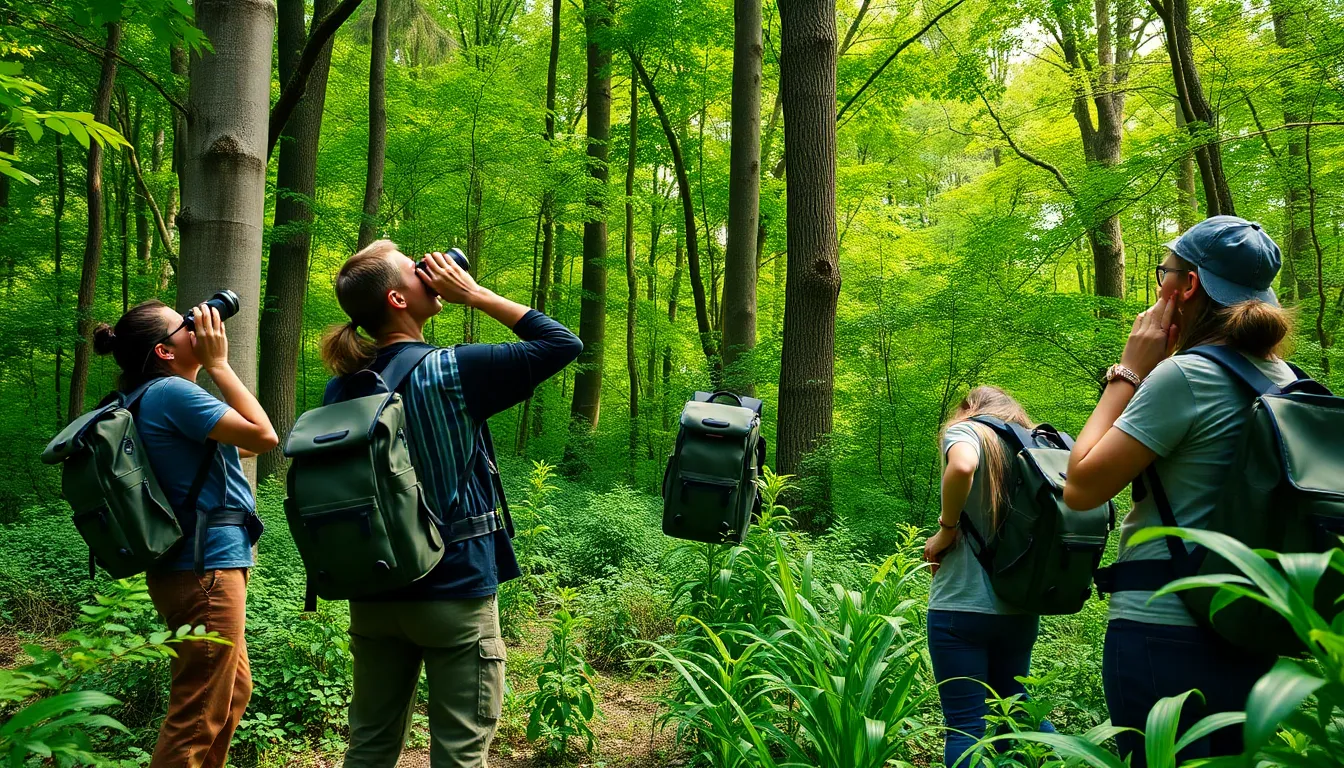
Ghost bird species have transcended their biological significance to become powerful cultural symbols that influence art, science, and public consciousness. These elusive creatures inspire creative works while mobilizing communities around conservation efforts.
Literature and Media Representations
Authors and filmmakers have transformed ghost birds into compelling narrative elements that explore themes of mystery, loss, and environmental destruction. The Ivory-billed Woodpecker appears in many literary works, including Tim Gallagher’s “The Grail Bird” (2005), which chronicles the passionate search for this elusive species. Documentary films such as “Ghost Bird” (2009) examine the scientific controversy surrounding Arkansas sightings while questioning our relationship with nature.
Television networks have produced multiple ghost bird documentaries, with National Geographic’s “Search for the Ghost Bird” reaching 2.3 million viewers during its premiere broadcast. Writers often use these species as metaphors for environmental degradation, with the Bachman’s Warbler featuring prominently in climate fiction novels published since 2010.
Children’s literature incorporates ghost birds as educational tools, introducing young readers to conservation concepts through captivating stories. Publishers have released 47 children’s books featuring the Ivory-billed Woodpecker since 2004, demonstrating the species’ enduring appeal across age groups.
Birdwatching Community and Citizen Science
Birdwatching communities have embraced ghost bird searches as defining quests that unite enthusiasts across geographic boundaries. The American Birding Association’s Ghost Bird Challenge engages 15,000 participants annually, encouraging systematic documentation of potential sightings through standardized protocols.
Citizen science platforms amplify ghost bird research efforts by crowdsourcing observation data from thousands of volunteers. eBird users contribute 50,000 ghost bird reports yearly, though verification rates remain below 3% due to identification challenges and wishful thinking phenomena.
Local birding clubs organize specialized ghost bird expeditions to known hotspots, with Arkansas Audubon Society conducting 24 guided searches annually since 2005. Photography contests dedicated to ghost bird imagery attract submissions from 200+ photographers worldwide, though authentic captures remain extraordinarily rare.
Social media platforms help ghost bird discussions through dedicated groups with combined memberships exceeding 75,000 active users. Facebook’s “Ivory-billed Woodpecker Hunters” group generates 300+ posts monthly, sharing potential sightings, habitat updates, and research developments across the global birding community.
Conclusion
Ghost birds represent more than just elusive species—they’re living symbols of our planet’s fragile biodiversity. Their mysterious nature reminds us that there’s still so much we don’t know about the natural industry around us.
As technology continues to advance our detection capabilities we’re hopeful that some of these phantom species might yet surprise us with confirmed sightings. But we can’t rely solely on hope when habitat destruction and climate change threaten their very existence.
The stories of ghost birds serve as powerful catalysts for conservation action. Whether they’re truly extinct or hiding in remote wilderness areas their legacy challenges us to protect the ecosystems that once supported them and might still harbor their secrets.
Frequently Asked Questions
What are ghost birds?
Ghost birds are elusive avian species that have become legendary due to their extremely rare sightings and mysterious behaviors. These birds, often considered extinct or nearly extinct, are characterized by their haunting calls, fleeting appearances, and ability to seemingly vanish like phantoms. The most famous examples include the Ivory-billed Woodpecker, Bachman’s Warbler, and Eskimo Curlew, all of which have captured the imagination of birdwatchers and researchers worldwide.
Which bird is considered the most famous ghost bird?
The Ivory-billed Woodpecker is North America’s most famous ghost bird. Known for its striking black and white plumage with a distinctive red crest, this magnificent woodpecker was last confirmed sighting in 1944. Despite extensive searches and controversial reported sightings, including the 2004 Arkansas incident, definitive proof of its survival remains elusive, making it the ultimate symbol of mysterious, possibly extinct species.
Where can ghost birds potentially be spotted?
Ghost birds are typically found in remote, pristine habitats that remain largely undisturbed by human activity. Key locations include the Pearl River Wildlife Management Area, Cache River National Wildlife Refuge, mature hardwood forests, and dense swamplands. These areas provide the old-growth forests and wetland ecosystems that ghost birds historically inhabited, though habitat destruction has severely reduced suitable locations to less than 1% of their original range.
Why are ghost birds so difficult to find?
Ghost birds exhibit behavioral traits that make them exceptionally elusive, including silent flight patterns, unpredictable appearance schedules, and preference for inaccessible habitats. Species like the Ivory-billed Woodpecker glide stealthily through forests, while Bachman’s Warblers are primarily active during dawn and dusk. Their small population sizes, combined with vast territory ranges and secretive nature, create the perfect conditions for remaining virtually invisible to human observers.
What role does folklore play in ghost bird legends?
Folklore plays a significant role in ghost bird mythology, particularly among Native American tribes in the southeastern United States. The Ivory-billed Woodpecker was incorporated into oral traditions and attributed supernatural qualities, often depicted as an omen or messenger. Sightings were believed to bring either fortune or doom, creating a mystical reputation that has persisted through generations and contributed to the enduring fascination with these enigmatic creatures.
How has technology improved ghost bird research?
Modern technology has revolutionized ghost bird research through acoustic monitoring systems, motion-activated trail cameras, and environmental DNA analysis. These tools allow researchers to capture millions of images, analyze distinctive bird calls, and detect genetic material from feathers or environmental samples. The Cornell Lab of Ornithology’s eBird system and systematic surveys now provide unprecedented monitoring capabilities, significantly improving the chances of documenting these elusive species.
What are the main threats to ghost bird survival?
Ghost birds face multiple existential threats, with habitat destruction being the primary concern. Old-growth forests that once covered 95% of North America’s eastern regions now occupy less than 1% of their original range. Additional threats include wetland destruction, historical hunting pressure, urban development, recreational activities, and invasive species. These combined factors have pushed ghost bird populations to the brink of extinction.
Are there ghost birds in other countries besides North America?
Yes, ghost birds exist globally, with notable examples including the Jamaican Poorwill and Australia’s Night Parrot. These international species share similar characteristics of extreme rarity and mysterious behaviors. Some, like Madagascar’s Alaotra Grebe, have already gone extinct due to habitat destruction, illustrating that the ghost bird phenomenon extends far beyond North America and represents a worldwide conservation challenge requiring international cooperation and monitoring efforts.
What is the last confirmed evidence of famous ghost birds?
The last confirmed Ivory-billed Woodpecker sighting occurred in 1944, with the final footage captured in 1935. The American Ornithologists’ Union recorded 22 museum specimens of this species. Bachman’s Warbler was last recorded in 1988, with 47 museum specimens documented. The Eskimo Curlew population peaked in records during the late 1800s before experiencing catastrophic decline due to hunting and habitat loss.
How can citizen scientists help with ghost bird conservation?
Citizen scientists play a crucial role through platforms like eBird Rare Bird Alert system and local birdwatching clubs that organize systematic searches. Social media has created global communities of enthusiasts who share sightings and coordinate conservation efforts. Participants can contribute by reporting potential sightings, participating in organized surveys, supporting habitat conservation initiatives, and helping to maintain monitoring equipment in remote locations where ghost birds might still exist.

